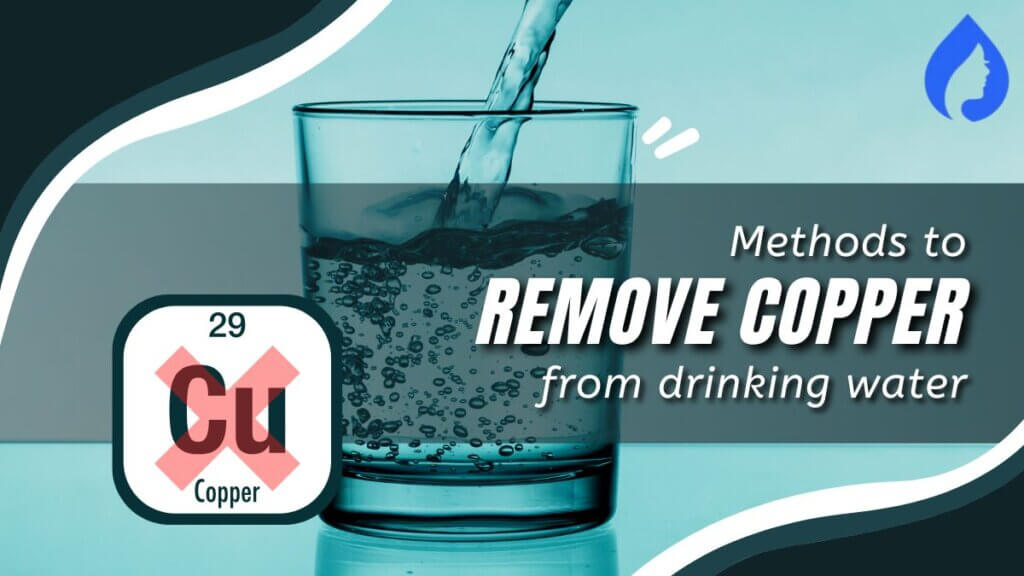
If you’ve tested your drinking water and found copper levels higher than 1.3 milligrams per liter, it’s a sign of concern, as regularly consuming such water can lead to
RO systems are the most efficient and economical way to remove copper from water. Thanks to their all-mighty semi-permeable membrane, which filters out copper particles. Acid neutralization, distillation, and ion exchange are other effective methods to reduce copper.
Keep reading to know how to remove copper from drinking water in detail and about the effective ways to protect yourself from copper toxicity due to high copper concentration in water.
How To Remove Copper From Drinking Water: Quick Overview
Here are the 7 effective methods to eliminate copper from water recommended by experts:
| Methods | Effectiveness | Execution | Time | Cost |
|---|---|---|---|---|
| Using acid neutralizer (best for well water) | Moderately effective (removes only 65 percent copper) | Very easy | A few minutes | $1.5/liter – $8/liter (approx) |
| Using an RO System | Very effective (removes about 97 to 98 percent copper) | Moderately easy | 2 to 5 hours (approx) are needed for installation | $300-$1500 (approx) |
| Using distillers | Very effective (eliminates more than 99 percent copper) | Moderately easy | Very long time (depending on how advanced the distillation system is) | $13-$800 (approx) |
| Using a water softener | Very effective (eliminates up to 95 percent copper) | Moderately easy | 2 to 5 hours (approx) are needed for installation | $80-$1200 (approx) |
| Flush water from your pipes thoroughly | Effective | Easy | 10-15 seconds | Zero cost (only a small wastage of water) |
| Use cold water | Less effective | Easy | A few seconds | Zero cost |
| Replace copper pipes with approved plastic ones (most difficult) | Very effective | Hard | Many days (depending on the speed of work) | Depends (based on how many cooper pipes are getting replaced with plastic pipes) |
Using Acid Neutralizer
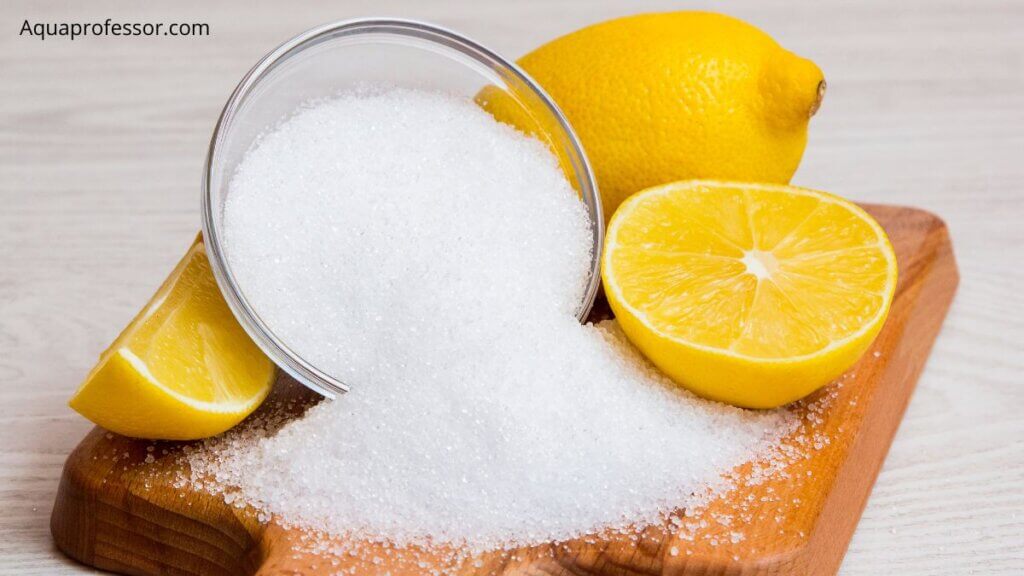
It’s the best pick method in case you have a well. Acid neutralizers like lime soda ash chemically react with your well water to reduce its copper contamination while retaining the essential nutrients in the water.
Is The Method Effective?
It’s moderately effective as it only removes about 65 percent of copper from water.
How Easy Is It To Execute The Method?
The method is very easy to execute.
What’s The Time Required For This Method?
It only takes a few minutes to sprinkle a few drops of acid neutralizer on the water.
Cost Involved:
The method costs approximately $1.5/liter – $8/liter.
Using An RO System
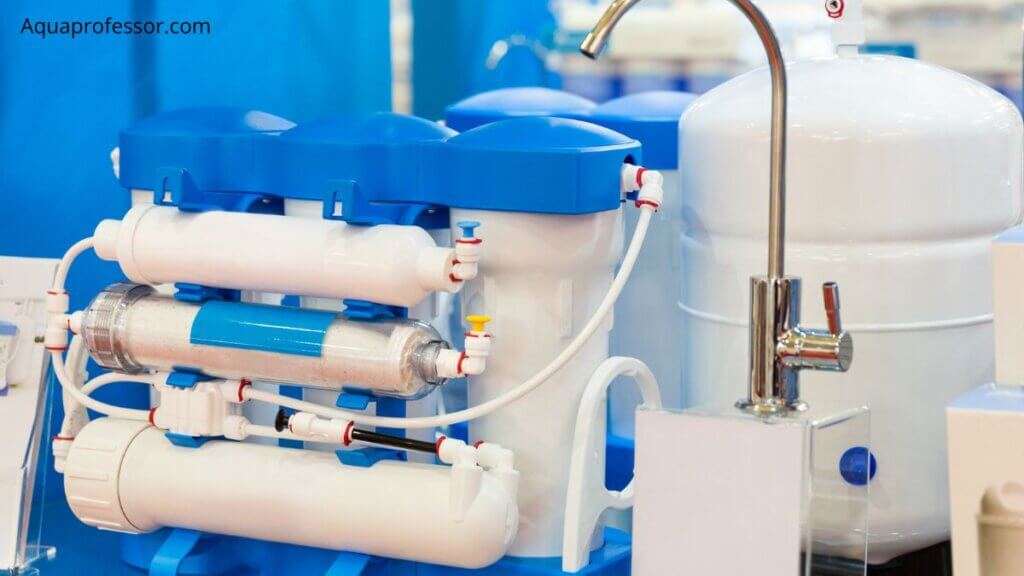
It’s one of the most beneficial methods for removing copper from water. Besides copper, RO units also reduces other types of contaminants. The system allows the water molecules to enter through a semi-permeable membrane and blocks the copper from running into the drinking water. I have an RO at my home that works flawlessly in removing copper.
Is The Method Effective?
Yes, it’s very effective and removes high concentrations of copper (about 97 to 98 percent) from the drinking water, thus saving you from copper’s adverse health effects.
How Easy Is It To Execute The Method?
The method is moderately easy to install and execute.
What’s The Time Required For This Method?
It takes 2 to 5 hours (approx) for the installer team to install it.
Cost Involved
The method costs approximately $300-$1500 (approx).
Also Read: Does RO remove Lead?
Using Distillers
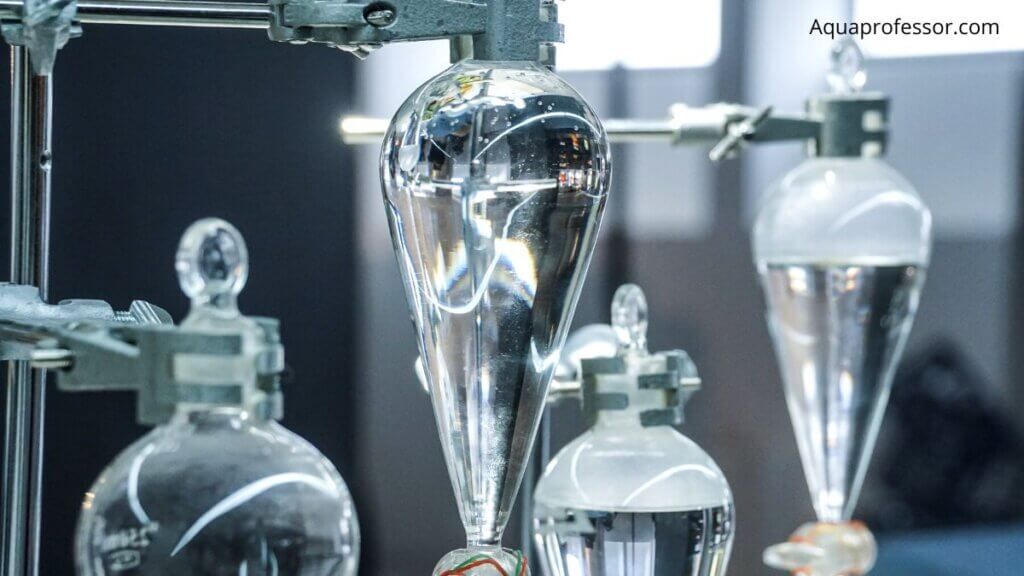
In this method, the steam that passes through the filter eliminates the copper and turns back into the tank with the water flow. Cooling the tank’s water after this makes it safe for drinking.
Is The Method Effective?
Yes, it’s very effective as it eliminates more than 99 percent copper.
How Easy Is It To Execute The Method?
The method is moderately easy to install and execute.
What’s The Time Required For ?This Method?
The process takes a very long time, depending on how advanced the distillation system is.
Cost Involved:
The method costs approximately $13-$800 (approx).
Also Read: Why Remove Microplastics From Drinking Water?
Using A Water Softener
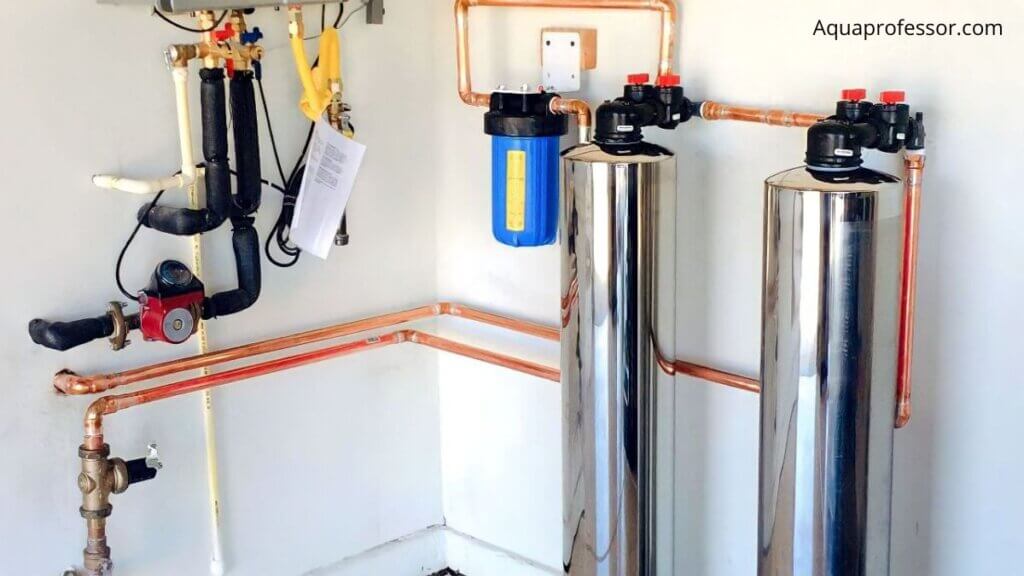
Water softeners are ion exchange filters that use a resin bed to remove heavy metals like copper from water by exchanging ions (cat-ions and an-ions). Just run the salt water solution through the resin bed, and you will be able to regenerate it again.
Is The Method Effective?
Yes, it’s very effective, as it eliminates more than 95 percent of copper ions.
How Easy Is It To Execute The Method?
The method is moderately easy to install and execute.
What’s The Time Required For This Method?
This method needs 2 to 5 hours (approx) for installation.
Cost Involved:
The method costs approximately $80-$1200 (approx).
Flush Water From Your Pipes Thoroughly
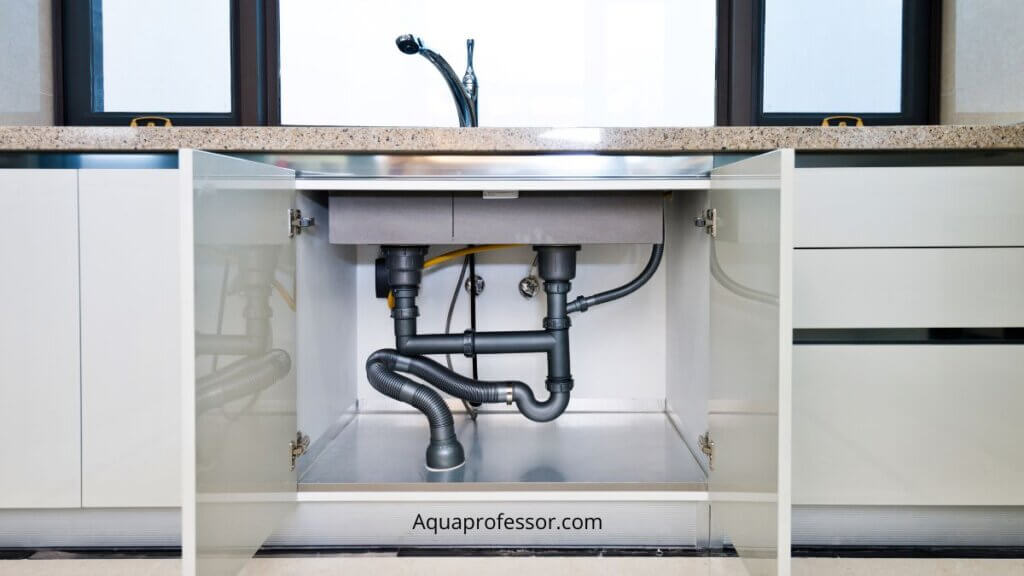
If you do not use water for a considerable period, contaminants like copper accumulate in pipes and fixtures. Flushing water from pipes thoroughly in such cases helps. After coming home from a long vacation, I followed this method and found it very helpful in removing copper and other contaminants from drinking water.
Is The Method Effective?
Yes, the method is effective.
How Easy Is It To Execute The Method?
The method is easy to execute.
What’s The Time Required For This Method?
The time required for this method is 10-15 seconds.
Cost Involved:
The method involves zero cost. Only a small wastage of water happens.
Use Cold Water
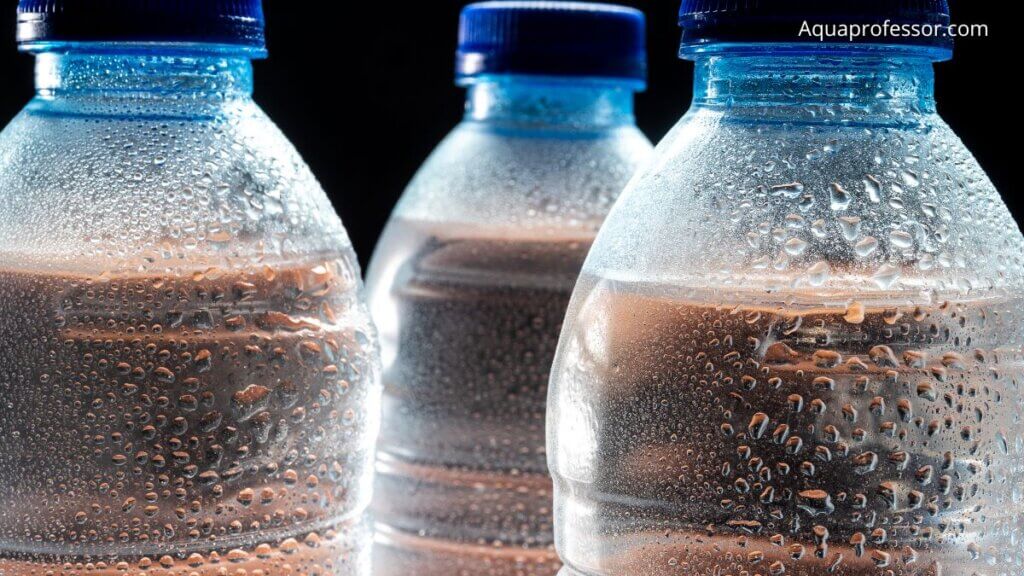
Hot water causes copper to dissolve faster in drinking water, increasing the risk of contamination. So, you can use cold water for drinking and other important purposes (like bathing) as it releases less copper and copper compounds.
Is The Method Effective?
The method is less effective and can be used when copper levels in water are below 1,300 µg/L. In case of excess copper level in the water (above 1,300 µg/L), it is wise to use RO to prevent health risks.
How Easy Is It To Execute The Method?
The method is easy to execute.
What’s The Time Required For This Method?
It requires a few seconds to get cold water for drinking.
Cost Involved:
The method involves zero cost.
Replace Copper Pipes With Approved Plastic Ones (Most Difficult)
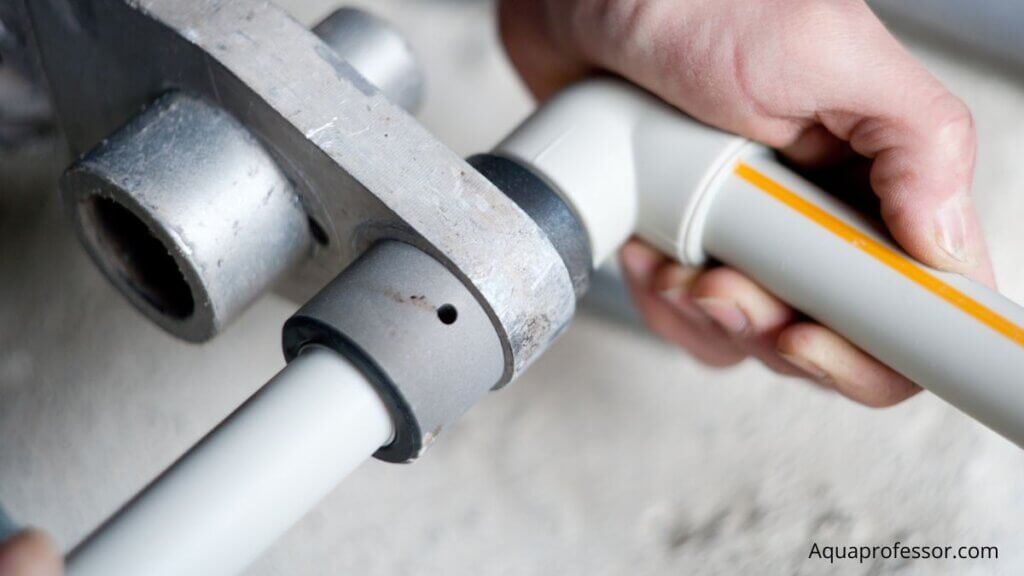
Sometimes, old copper pipes (public and household plumbing systems) get corroded and mixed with the drinking water. This corrosive water comprises high amounts of copper, which has a toxic effect on human health. So, you can take proactive action against copper by replacing copper pipes with approved plastic ones.
Is The Method Effective?
The method is very much effective.
How Easy Is It To Execute The Method?
The method is the most difficult to execute.
What’s The Time Required For This Method?
It may require many days or weeks, depending upon the efficiency of the plumbers at work.
Cost Involved:
Its cost depends upon the number of pipes you are replacing.
Does My Water Has Copper In It: Signs & Tests
Some Common Signs Of Copper In Drinking Water Are:
Due to the adverse effect of increased copper and other dissolved solids on your health, it is important to test the presence of copper and other contaminants in drinking water. Here are two easy methods:
Certified Lab Testing
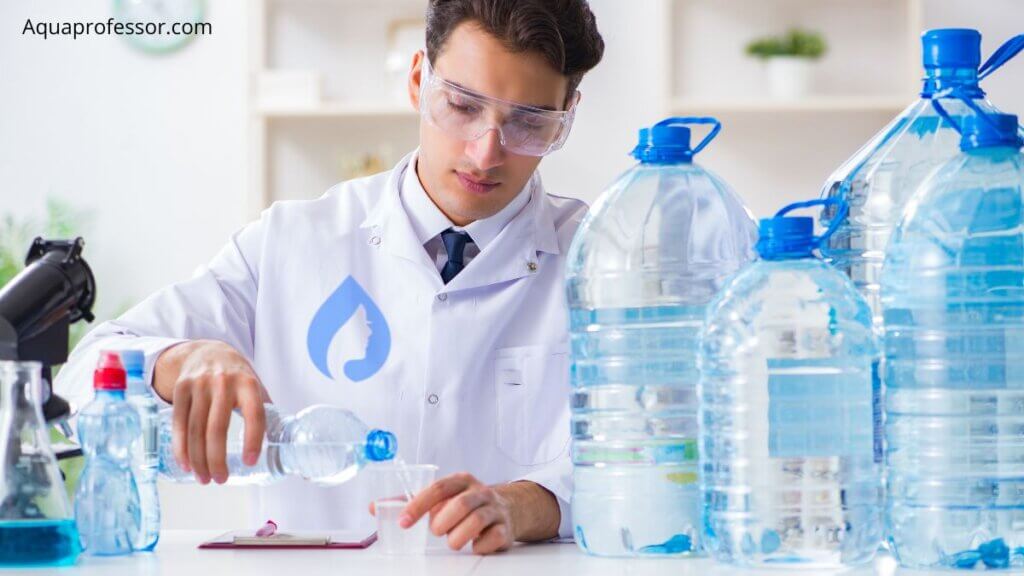
This test of copper is done with a testing kit that the health department laboratory or the private laboratory sends to you.
After filling the kit vial with the required tap water sample, you must submit it to the laboratory. It may take several days to get the complete breakdown of different contaminants in your drinking water via emails, like lead and copper.
To perform this test, you should appoint a certified laboratory. It will ensure the legitimacy of the results.
At-Home Water Test Kit
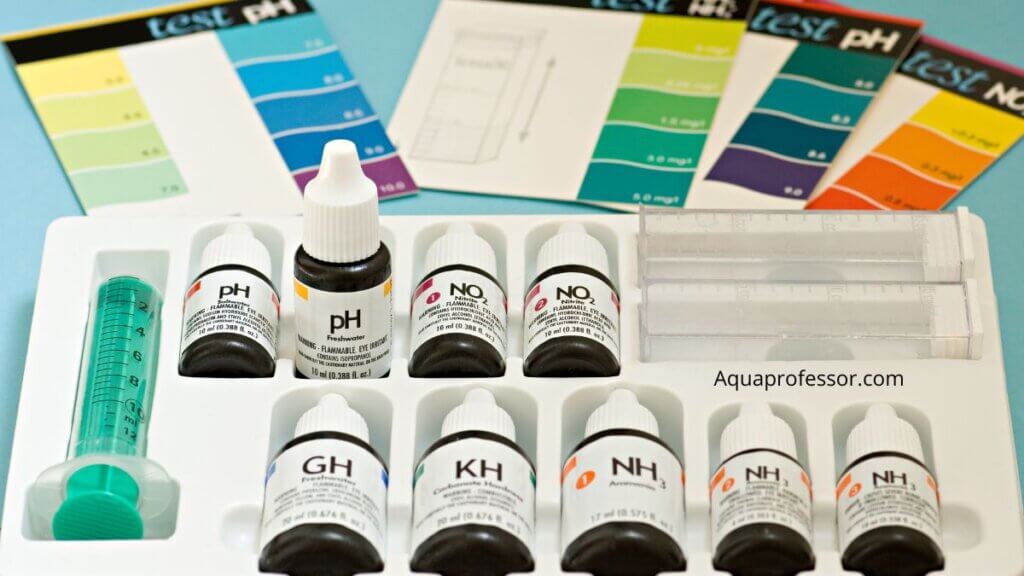
You can also test the level of copper or lead using a home kit like Tapscore, which could cost anywhere between $20-50. However, the home kit will not give you the exact breakdown of your water.
To use the kit, you have to first unlock the kit and then withdraw the water testing strips, small sample bottles, and the color chart. The next step involves filling the sample bottle with your tap water and dipping a testing strip into it.
Now, after one minute, you have to notice the changed color of the strip and compare it with the color chart. It would roughly tell you the amount of copper present in your water.
Using Tapscore, you can test for lead and copper in your drinking water within five days and get a detailed report with a customized water treatment solution.
When Does Copper In Drinking Water Becomes Harmful? [Don’t Ignore]
Copper, if consumed in low amounts, is beneficial for human beings. But the problem starts when the limit of copper in drinking water exceeds the EPA limit of 1.3 mg/L. When people (especially breast-fed infants or formula-fed infants) consume that water with excess copper, it may lead to harmful effects of copper on the human body, such as
So, your maximum contaminant level for copper must be not more than 1.3 milligrams per liter. To avoid these fatal effects of copper, performing a routine copper water test (which I have mentioned above) by every healthy adult at their home is crucial. Also, EPA asks for an annual water quality report or CCR (Consumer Confidence Report) from all public water systems. So you can check such water quality reports to understand the purity of drinking water in your neighborhood.
How To Remove Copper From Drinking Water: FAQs
How Does Copper Get Into Water?
Copper is naturally present in small amounts in all water sources. But, the unnatural sources of copper are corrosion of old household copper pipes, plumbing, faucets, and different fixtures leading to unhealthy contamination.
Does boiling water remove copper?
No, boiling water never removes copper. On the contrary, it increases the level of copper in drinking water.
Can water from copper pipes make you sick?
Yes, water from copper plumbing or pipes can make you sick. This is because corroded copper enters the drinking water from the pipes and plumbing and damages our health.
What is a safe level of copper in drinking water?
According to EPA, 1.3 milligrams of copper per liter of drinking water is safe; if copper is present beyond that level, it harms our health.
Do Brita filters remove copper?
Brita filters can remove copper and other contaminants like zinc, chlorine, mercury, etc. However, it cannot remove all the nitrates, viruses, bacteria, and dissolved minerals from water.
Sayan understands that access to clean water doesn’t have to be costly.
He strives to provide knowledge of water purification techniques in the simplest way possible so that we can lead a healthy life without breaking our bank.
